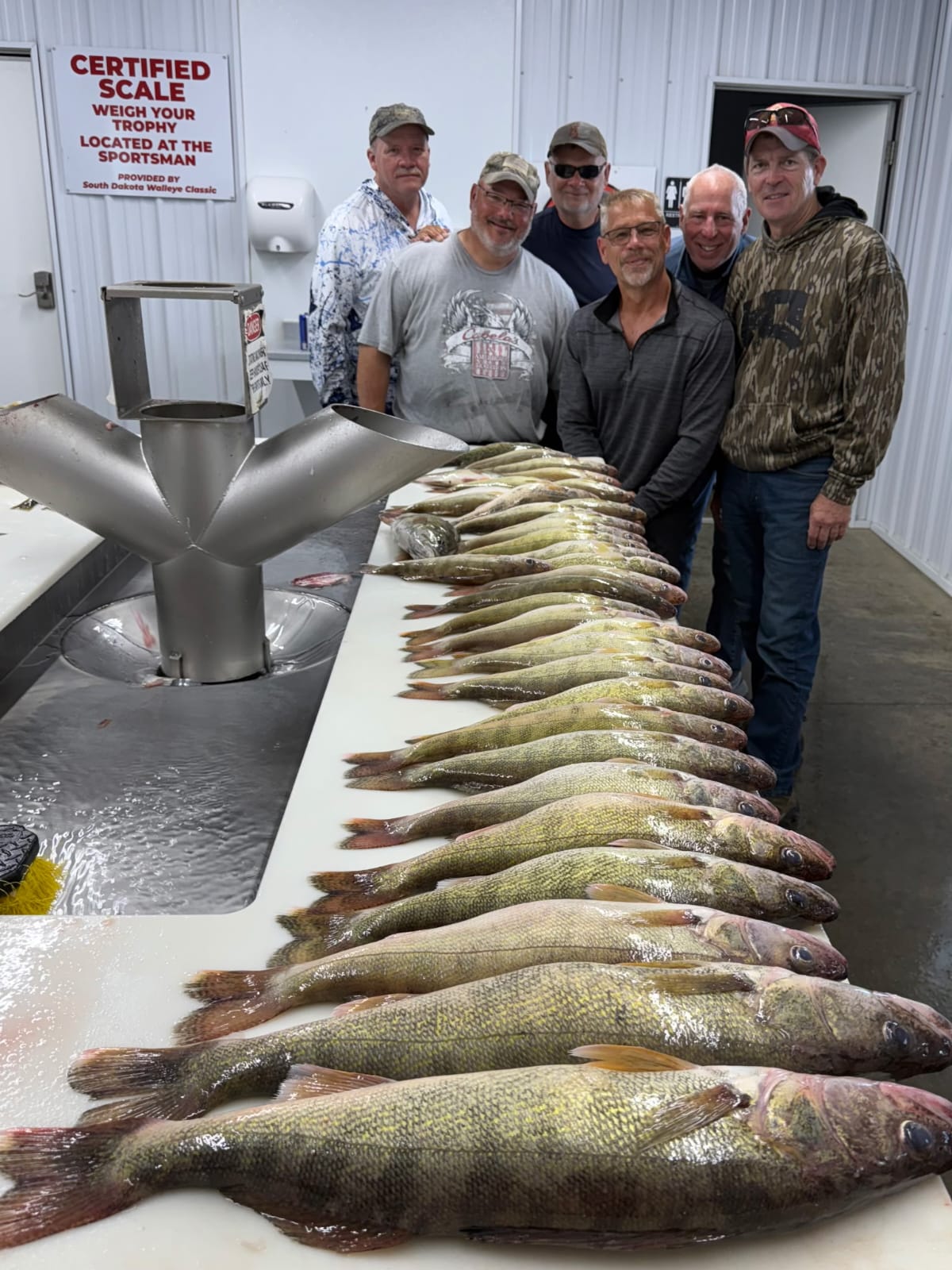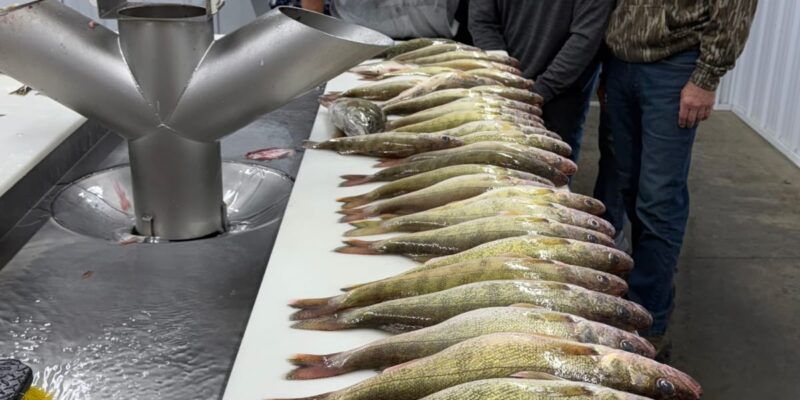
Last weekend, Tom’s nephew Kevin joined five of his buddies for a fishing trip on the Missouri River in South Dakota. Here are details about the Missouri River in that location.
We were in awe when we saw the above photo, which reminded us of our time living in Minnesota on a lake and frequently fishing from the dock at our property, never catching many walleye, as Kevin and his friends did. If we caught one walleye while out for the day, we’d have been thrilled.
A catch like this appears to be a once-in-a-lifetime experience. Still, devoted fishing aficionados might disagree, having been fortunate and skilled enough to have a few days like these.
Photo from ten years ago today, June 9, 2015:





























































